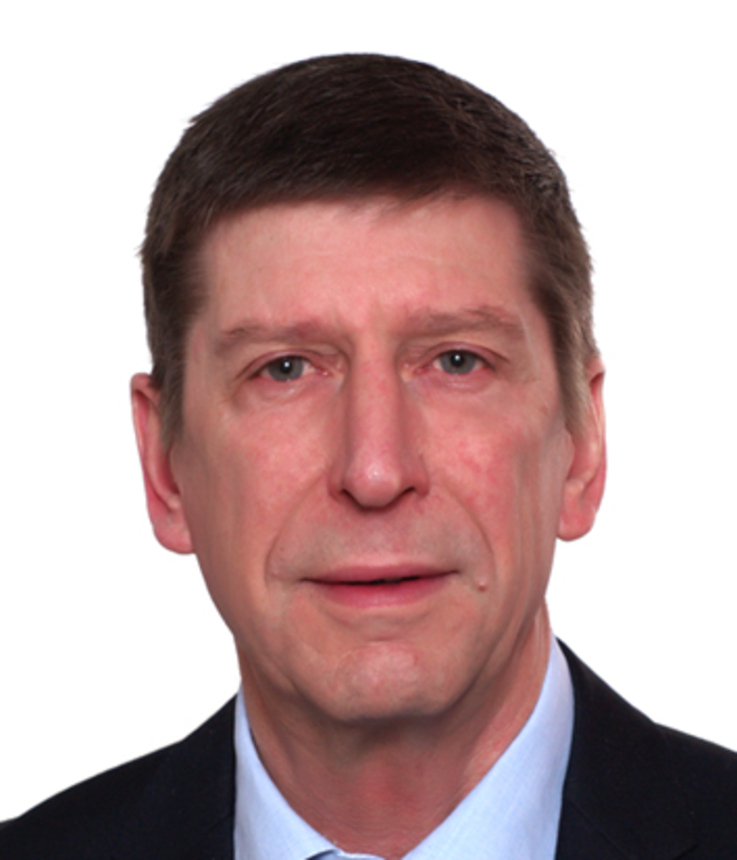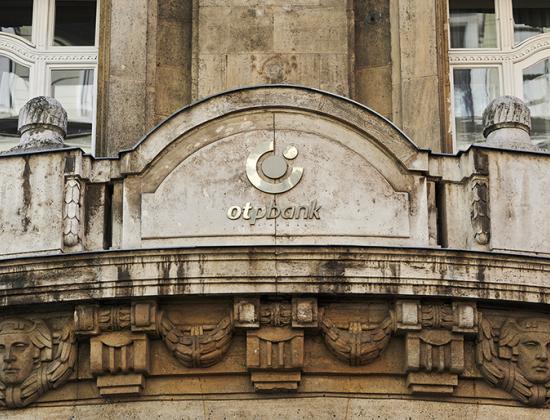John Lodder: Leadership dilemmas, Quite Quitting and a four day workweek

My January column has thoughts about Leadership by Manfred Kets de Vries and some lessons of this month’s ‘World Economic Forum’ in Davos. The ‘five dimensions of effective Leadership for today and tomorrow’ by Klaus Schwab leads me to thoughts about ‘Quite Quitting’ as a healthy response to a toxic work culture which I also relate to the ‘FLOW-model’. I conclude with the results of a large experiment with a ‘four-day, 32 hour workweek’, including a link to the full report.
75% of CEO's think they belong to the group of the 25% best managers.” (Manfred Kets de Vries)
Kets de Vries about male and female Leadership
Senior managers often do not realize that their behavior leads to a lack of initiative in employees, with all the consequences that entails. Prof. dr. Manfred Kets de Vries, one of the most influential coaches and consultants for the top of international business, makes them understand this in conversations about vulnerability, control and transgressive behavior.
Anyone who speaks to senior managers regularly gets the same question: ‘How do we ensure that employees show initiative that they get moving?’ A question asked out of frustration.
Manfred Kets de Vries, professor of leadership development and psychoanalyst at INSEAD has a clear answer to this: ‘’about 80 percent of employees feel disengaged, so…make sure you create an organization where people do feel involved and where they feel alive.'’
Letting leaders reflect
He has trained thousands of leaders, in large part through its CEO Recycling Program and other programs at the international business school INSEAD. Time and time again he notices that leaders are not reflective.
He does this by letting them look at themselves from the perspective of psychoanalysis, by showing them that they react from an old reflex, their upbringing or their fears; they so gain insight into their shortcomings with major consequences for their leadership styles.
For instance when someone keeps control in his organization. Kets de Vries said: 'recently a CEO told me:
‘I have no life. I work all the time, to prevent things from going wrong.’ Then I said: ‘’you are the CEO, you have all the power in the world and you have no life? You do that to yourself. You are the author of your own misery. There are so many things you can do to really have a life.’’
Kets de Vries likes to be empathetic and helpful, but is not guided by the pain of his clients. And also not with this CEO. ‘’He is a control freak and does not delegate. People are not stupid. They know they'll be punished if they do something wrong, so they check with the boss first. What he should do when they come to him to make a decision is just say: find a solution yourself. He does not do that. He creates dependency and then complains that no initiative is taken.”
Leaders rarely ask for help: Control, it's a recurring problem with leaders.
In the beginning it works, it brings them success, but as the organizations get bigger, the leaders get bogged down. Then they can't possibly check everything, but they still try.
Kets de Vries advises them to only do what is important and what they enjoy themselves, to do what gives them energy. “The rest should be left to someone else,” he says. "Otherwise there will be an illusion of control."
‘’In addition, senior managers who get stuck rarely ask for help’’ says Kets de Vries: ‘'I recently had a number of people in my seminar with this problem. Why they don't ask for help, I don't know exactly yet. Pride, ego and shame of not being good enough often plays a role. They apparently fear that if they ask for help they will become vulnerable.’’
Some people think they should be independent. Of course, you can find reasons for that behavior in their personal history. ‘’If you were not sure as a child whether your parents were there for you, there is often the fear of rejection.'’
Fascination with autocratic leaders
Kets de Vries is always looking for a logical explanation for the behavior of leaders, even if this behavior is irrational. He is fascinated by the behavior of autocratic leaders such as Vladimir Putin, Donald Trump, Jair Bolsonaro and Xi Jinping. Each of these leaders is obsessively in control. The leadership coach researches their origins and writes articles about them, so that the knowledge is sufficient for everyone.
"It seems that when you get into a certain situation, you start to behave strangely," says Kets de Vries. "That's universal. If this kind of leaders make a mistake, like Putin in Ukraine and Xi in China with the Pandemic then they are stuck, imprisoned. They can't admit their mistake without losing face, so they do the craziest things to stay in power.”
Living in an echo chamber
In fact, it works the same way with leaders in organizations. They often start off well, but as soon as they gain more power, they get too excited, according to Kets de Vries. He points to the directors of an unnamed Dutch bank who had a separate elevator, far from the employees. That elevator went to a shielded floor with a private restaurant. “If you came up there, you came to the heroes,” he says in a raised voice.
CEO of the year elections also provoke excessive behavior, he continues. "They are the beginning of the end. They write about you, you put your name on the building, you buy a sports club or Twitter, and you get a younger husband or wife. All those things add up. You become more and more full of yourself and start to believe that you are amazing.You live in an echo chamber. Just look at Trump. An incredible example of a person addicted to applause.”
By now Kets de Vries has seen thousands of leaders pass by, many have narcissistic behavioral traits.
His mouth falls open upon hearing this incident:
A few weeks ago a famous Dutch presenter of a TV program was fired because of unacceptable behavior. He demanded a technician, who had made a mistake, to kneel down for him and to make his excuses in front of all colleagues. ‘We’re playing Champions League here and this mistake is unacceptable’ he shouted to the technician.
“Such a person should really leave the organization immediately, even if he gets great results. That result is an excuse. Such persons are toxic. In the long run, they destroy an organization.”
Important role for women
When asked what bystanders can do about such toxic bosses, Kets de Vries pins his hopes on women.
“Educate them,” he says. ‘’They are the carriers of culture. Just look at the monkeys. The closest species to humans is the bonobo. Our DNA is more than 98 percent the same. They make love, not war, because women call the shots. But what do we do? We always talk about the silverback gorilla.
We should have more of a bonobo society.”
In addition to more women in the top, there is also a task for the employees. They could put themselves more in the shoes of the leader, the psychoanalyst believes. “Look what kind of pressure a boss is under. We also really like the hierarchy. A gorilla-type organization is very human. For example, when there is panic, our natural response is, Give me direction. And there are always people who say: I have the answer, follow me."'
Just like the leader, the employees must therefore also become more reflective. They also need to know why they act the way they do, otherwise they will continue to fall into the same trap.
Kets de Vries: ‘'Einstein is credited with saying: the definition of insanity is doing the same thing over and over again, while expecting different results. We should have more of a bonobo society!’’
World Economic Forum is a global networking event
Prof. dr. Klaus Schwab is the founder and Executive Chairman of the World Economic Forum (WEF) that since its first edition in 1971 has grown into a global networking event of top business executives, political leaders, scientists and celebrities to debate ideas, share best practices and who collaborate on solutions.
These leaders are able to overcome challenges, inspire others, and achieve meaningful impact on government policies, industries and communities. This year the meeting took place from 16 to 20 January.
2,700 guests attended the debate sessions on social, economic and climate issues.
But the real networking and decision making takes place behind closed doors. That is also grist to the mill of left-wing activists and conspiracy theorists which portray Schwab as the evil genius behind increasing globalization.
The WEF is headquartered in Geneva and has ca. 400 employees. They organize events throughout the year, culminating in the annual meeting in Davos. The organization spends more than 360 million euros annually. That money comes from “strategic partners” of the WEF, some hundred multinationals, from Amazon to Unilever.
What are the main lessons of WEF 2023?
‘A call for responsive and responsible leadership’ was the theme of this year's WEF.
According to Mark Beekman, CEO of Graydon, this is a paradox, because in our rapidly evolving economy, elite conferences are no longer relevant. Change is increasingly bottom-up, complex and unpredictable. Contemporary leadership is ‘letting go’.
‘We are living in a world no longer driven by linear change, but rather exponential change occurring simultaneously in all fields’ summarized Klaus Schwab the challenges facing today's political, business and economic elite.
The central question at the conference in Davos was: how can you lead in this complex world?
Schwab touched on a very sensitive subject with this. Not just for political leaders. Many CEOs and managers struggle with their leadership. It is difficult to steer in today's unpredictable markets.
Mobile internet, the sharing economy and exponential technological developments are rapidly turning classic distribution channels and business models upside down. How do you ensure that your company remains relevant?
From directive to strategic
A changing economy requires a different form of leadership.
For example, an industrial economy with clear customer questions and outcomes requires directive leadership. The car manufacturer produces cars for people who need personal transport. Hotels put people to sleep who need accommodation. The problem, the solution and the way to arrive at the solution are crystal clear. The customer is at a distance and there is only one distribution channel.
Companies in this market have a classic pyramid structure with a general boss at the top. This boss makes the final decisions on all aspects of the business. Linear challenges do not require complex governance.
From the second half of the 1990s, standardized products increasingly gave way to service logic.
The customer experience takes center stage. The end goal of the companies is still clear – a satisfied customer – but the method to achieve that goal is becoming more complex.
Take the hotel, for example: 'offering accommodation' is no longer sufficient as a service. Business customers want a meeting room, families want entertainment for their children, non-staying customers want a pleasant bar.
There is direct interaction with the customer. The distribution channels are also increasing: customers can book through a travel agency, just walk in or book online. The organizational structure is shifting to a matrix: several equal departments that work together intensively. Due to this increasing complexity, the classic 'boss' can no longer arrange everything. Her/his role shifts to that of Leader.
A new economy
Today we see a new economy unfolding. Exponentially growing technology and information have created unpredictable customer demand. Who knows what the customer wants tomorrow?
While the banking industry has been busy in recent years about the unification of the payment zones in Europe (SEPA), they have been overtaken left and right by financial innovations such as mobile payment systems and Bitcoins. And while hotels were experimenting with design formulas, boutique and capsule hotels, there was suddenly Airbnb.
The relationship between customer and supplier was also given a completely new meaning. Boundaries are blurring and organizational structures are no longer clearly defined. Take Airbnb: one minute you're a customer, the next you're a supplier. The interaction between the stakeholders takes place simultaneously over different channels: we can explore a neighborhood, then search on the desktop whether there are apartments for rent and then later record our stay on our smartphone in the office. To let us know later via social media if we liked it.
Creative leadership
According to Klaus Schwab, this new economy requires 'responsive and responsible' leadership.
Today’s leaders face multiple, interconnected global challenges, from economic uncertainty to geopolitical fragmentation to the climate crisis.
The complexity of these issues requires a renewed focus on what makes an effective leader.
The executives of tomorrow must actively engage in dialogue with society (or customers). And take their responsibility in providing sustainable solutions for complex problems.
Modern leadership is precisely the letting go of so-called established truths. You may recognize the complexity of the world, economy or your specific market, but those who cling to a power structure, product or service will soon be overtaken by reality.
Companies can remain relevant for a long time but it requires a different kind of leadership.
Leadership that with customers look for the new customer demand.
Leadership that dares to question everything including leadership itself.
Leadership that dares to open the boundaries of the organization.
Leadership with a vision and a horizon, but with a very agile course.
Klaus Schwab has formed his own practical definition for the five key dimensions of effective leadership.
Schwab’s five dimensions of effective leadership.
1 - Soul: Clear purpose
Leaders need a clear direction in whatever they choose to do. The driving force behind this purpose may stem from deep beliefs or values that they aspire to live up to, or it may come from an ambitious vision they seek to fulfil. Purpose encapsulates a leader’s life’s dreams, and achieving that purpose helps them define their legacy while leaving a positive impact on the world.
2 - Brains: Professionalism
Leadership requires the competence and skills to successfully perform to achieve goals. Contextual intelligence is also essential, particularly now, as we are living in such a fast-changing environment.
Leaders must develop the systems-thinking capacity to see the big picture and connect the dots.
3 - Heart: Passion and compassion
The emotional force behind actions matters. It can often be challenging to succeed because obstacles can crowd out opportunities. But with passion for their work and its potential impact, as well as compassion for others, leaders can engage individuals, communities, and institutions behind a compelling commitment to a common goal.
4 - Muscles: Perseverance to translate ideas into action
Effective leaders provide the energy to drive outcomes and achieve impact. Purpose, professionalism, and passion can only go so far unless leaders also have the power and perseverance to execute on their ideas and see them through.
5 - Good Nerves: Positive mindset
All leaders encounter adversity, disruption and many other sources of stress. Resilience and a positive mindset are critical to mastering such situations and emerging even stronger. “Mens sana in corpore sano”, a Latin phrase meaning “a healthy mind in a healthy body”, is probably the best recipe for resilience as it highlights the power of maintaining a healthy balance in life – mentally, physically and emotionally.
Schwab: ‘’All five dimensions of leadership are required to successfully deal with the complexity of today’s challenges. More than ever, we need to lead with soul, brains, heart, muscles and good nerves!’’
I cannot agree more with Schwab however, unfortunately, most managers still are no effective leaders.
I only look at Gallup’s annual research showing that for more than a decade 80% of global employees and 60% of global managers are not engaged in their jobs.
In my opinion it still starts at the top in most organizations, like water streams top-down, management- / leadership styles still influences the workforce top-down.
Fortunately more and more big organizations decentralized fundamental responsibilities in their structure; examples a.o. are Haier, Bosch, Buurtzorg or introduced Holocracy, Quantum management etc.
I wrote about such examples before, there is absolutely hope, the first steps are made and it is expanding.
Quite Quitting
Research after ‘Quite Quitting’ shows that more and more, especially younger people want to work less, want to work remote or hybrid and want to have a better and healthier life-work balance.
Quiet Quitting is a reaction of anti-ambition on toxic work norms and management behavior. ‘quite quitters’ already said mentally good bye to their company and only do what is asked of them and nothing more.
This causes frustrations for many managers. I think back of the earlier mentioned manager who complained to Kets de Vries: ‘I have no life, I work all the time, to prevent things from going wrong.’
But actually, Quiet Quitting is a healthy response to work that constantly overwhelms us says psychologist Thijs Launspach.
He wonders: Is there something wrong with not wanting to be reachable anymore outside your working hours? Or not being the first to raise your hand when asked to work overtime? Or if you won’t accept extra tasks if you don't get paid for it? No he says, something is wrong with our work culture.
Is Quiet quitting bad or weak?
NO ! Launspach sees quiet quitting as a counter-reaction to the 'toxic' work standards within some sectors. “More and more people, especially young people, want to go home after working hours. They no longer feel like answering e-mails from their boss in their evenings and weekends.”
They are fed up with work that demands too much and forces you to go beyond your own boundaries.
That may not be the 'go-getter mentality' we were used to, but it is healthy work behavior. Because based on the shocking burnout figures, we have to conclude that our work standards are making us sick.”
Stress is occupational disease number 1
In the Netherlands stress at work is occupational disease number one.
Every year, 17 percent of the working population experience burnout complaints. With an active labor force of about 8.5 million people, this amounts to 1,3 million Dutch people who are dealing with burnout-related complaints. Globally it is ca. 10% of the workforce. Launspach therefore does not speak of the era of anti-ambition, but of the era of toxic work standards. And more and more younger generations are consciously renouncing that.
40 hour work week? Obsolete!
The psychologist sees this in various sectors. ‘Young people are standing up in the legal profession and healthcare, among others. They say: this far and no further. Young doctors refuse to work another 80 hours a week. And more and more lawyers are demanding their evenings back. A movement is unleashed against toxic working standards and against a 40 hour work week, because it is very outdated.
Launspach: ‘’The 40-hour work week model comes from the days when we worked in factories and literally traded our time for salary. “We clocked in and out neatly and translated the number of hours into the level of productivity. We still do that now, ca. two hundred years later. Which also shows a lack of trust.’’
Mental and cognitive work
We no longer work with our hands but with our brains. That means: mentally and cognitively complex work, which is almost impossible to concentrate eight hours a day, forty hours a week.
This model was built at a time when a household worked on one full-time job. Now a household runs on two, or at least one and a half, full-time job(s). However, the 40-hour model assumes a partner has enough time for activities to keep a family going. But not from two workers who have to take care of these activities in the evenings and weekends. That causes stress: we always feel like we don't have enough time.
Working in 2022
Launspach is therefore committed to a new model. "They already get it in Belgium, Iceland and part of France. There they have a full-time working week of 34 or 36 hours."
That’s a good start, he says, but it’s not enough. “We have to get rid of the crazy idea always need to be available. That is anything but healthy. There has been some talk about the right of inaccessibility.
I believe in that, because your head has to be off once in a while. That's the only way to relax.
Stuck in bullshit jobs
Such an ideal working week also requires a meaningful purpose. ‘Happiness at work can be found in work with meaning. So not so much in work that pur sang extracts value from the economy.
According to the psychologist, we are still too stuck in bullshit jobs. You do something and get paid for it, but you wonder what the point is.
The effect? Quiet quitting.
Quite Quitting and FLOW
Quite Quitting reminds me of the ‘Flow model’ by Mihaly Csikszentmihalyi. In his book ‘Creativity, Flow and the psychology of Discovery and Invention’, this American psychologist named nine basic elements for ‘being and feeling in Flow’:
-One has a clear goal
-Every activity is immediately followed by feedback
-There is a balance between challenge and capability
-Action and consciousness are one
-Distractions are banned from consciousness
-There is no fear for failure
-There is no question of self-consciousness
-The sense of time becomes confused
-The activity becomes a goal at itself.
These nine elements combined cause a feeling of ‘being in a flow’. Most people have experienced this feeling of ‘Flow’ e.g. when you are doing something you like very much, when working on an interesting or challenging task, when working on a hobby or doing an activity or sport that occupies your concentration and which gives you a feeling of pleasure and enjoyment.
When you feel like ‘being in flow’ Csikszentmihalyi says you are in the ‘Flow Channel’ as shown in Figure 1.
Figure 1: The Flow Model by Csikszentmihalyi.
Happy people, engaged employees are in a Flow creating a ‘Peak Performance’.
Because the ‘Challenge’ they work on is perfectly adjusted to their ‘Skills’.
However, if that balance is gone, like the ‘Challenge’ is too difficult for your ‘Skills’ you will experience ‘Anxiety’ and/or stress. On the other hand, if the ‘Challenge’ is too easy for your ‘Skills’ you will experience ‘Boredom and/or stress’.
Not functioning in the ‘Flow Channel’ causes ‘Apathy’ and a certain amount of stress, and might lead to a feeling and choice for ‘Quite Quitting’.
Organizations and HR departments should address Quite Quitting in a policy to transform their actual organization- and work-culture. HR should also reinvent their recruitment, selection and onboarding processes.
A Four-day, 32 hour workweek is better for everyone
A four-day, 32 hour workweek is less stressful and just as productive as a five day, 40 hour workweek.
That is the conclusion of an experiment with one day less working.
The study was conducted by ‘4-Day Week Global’. It took place among more than 1,000 employees of 33 companies in six countries.
Employees do as much work in four days as in five, for the same salary.
Not a single company that participated in the survey wants to go back to a 40-hour working week.
What is the ‘4 Day Week’ pilot program?
The pilot is a coordinated, 6-month trial of a four-day, 32hour workweek with no loss in pay for employees.
This program was coordinated by ‘4 Day Week Global’ in partnership with researchers at Cambridge University (UK) and Boston College (USA), together with local researchers in each region.
A resounding success
2022 has been the year of the ‘4 Day Week’. It was named by CNN to its prestigious “Risk Takers” as one of the nine most important new ideas in business.
A number of national governments announced sponsored trials of four-day weeks. Interest from companies, employees, non-profits, and researchers surged around the world. As people struggle to recover from the pandemic, workplace stress, long hours and the pressures of daily life have emerged as urgent problems.
A shorter work week is an obvious response. Work time reduction has long been promoted as a multiple dividend reform, with the potential to bring social, economic and climate benefits.
As the most popular form of work time reduction, a 4 day, 32-hour workweek has been gaining momentum in recent years.
Given this growth in interest, ‘4 Day Week Global’ began supporting companies and non-profit organizations who wanted to try a four-day, 32-hour workweek with no reduction in pay.
In 2022, their efforts led to the world’s first coordinated trials and the large-scale independent research effort of the impacts of a 4 day week.
The results are now in: The trials have been a resounding success on virtually every dimension.
Companies are extremely pleased with their performance, productivity and overall experience, with almost all of them already committing or planning to continue with the four-day week schedule.
Click here to read or download the report on the first ‘4 Day Week Global’ pilot program at:
https://www.4dayweek.com/us-ireland-results
For this column I was inspired by Prof. dr. Manfred Kets de Vries, Franka Rolvink Couzy, Prof. dr. Klaus Schwab, Mark Beekman, Thijs Launspach, Charlotte Melkert, Ralf Knegtmans for which I thank you all.
John Lodder M.A., MSc.
(ps/sm)




























